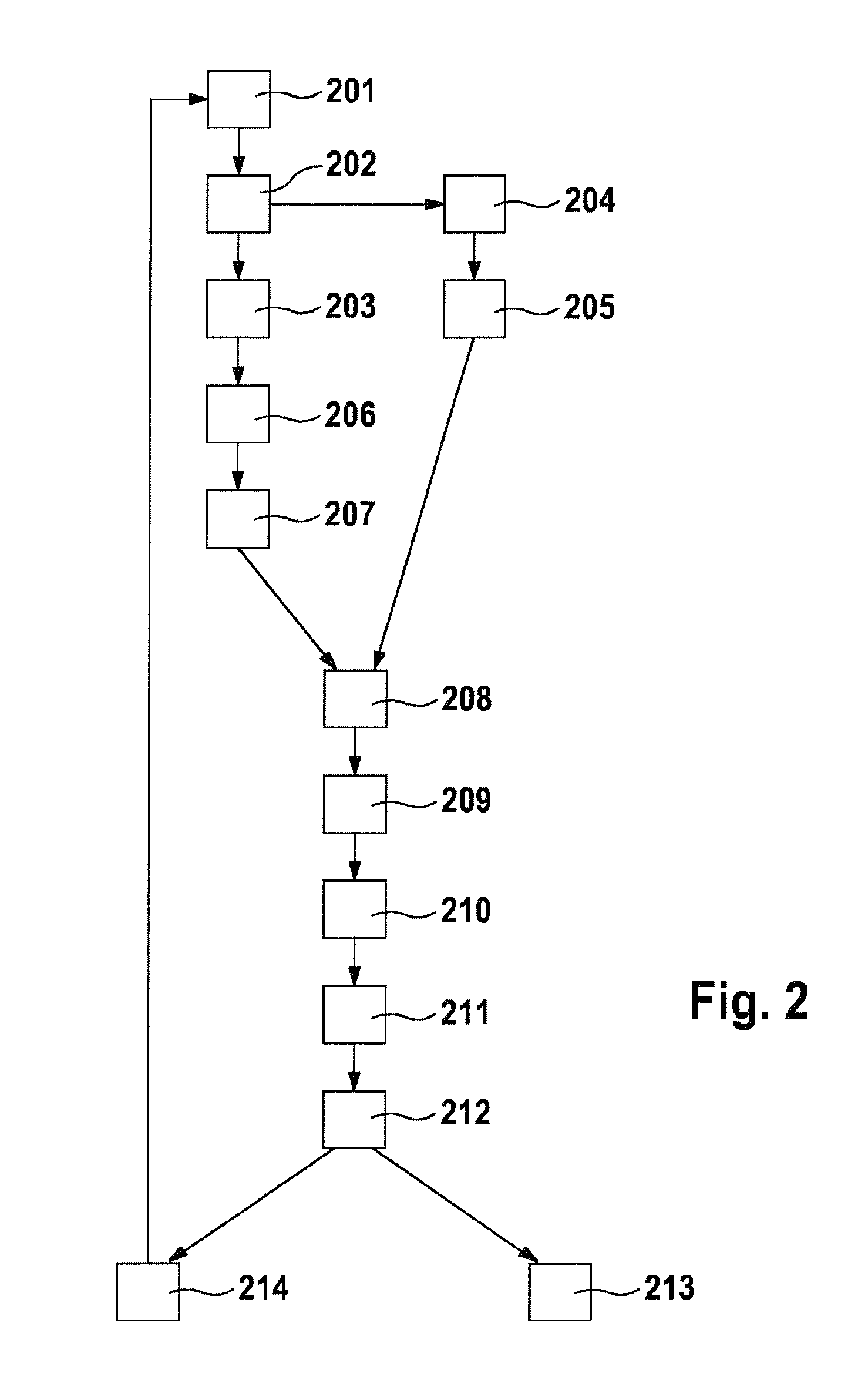Method for conveying a metered hydraulic volume in a vehicle braking system by means of an electrically driven motor pump assembly and vehicle braking system
a technology of electrical drive and metered hydraulic volume, which is applied in the direction of positive displacement liquid engine, pump control, vehicle components, etc., can solve the problems of complex design of other consumers and only short time period of pump motor control, and achieve the effect of small hydraulic volume, high clock frequency of control, and small volum
- Summary
- Abstract
- Description
- Claims
- Application Information
AI Technical Summary
Benefits of technology
Problems solved by technology
Method used
Image
Examples
Embodiment Construction
[0030]FIG. 1a shows current I and voltage U of the motor over time t, wherein curve 11 describes the motor voltage and curve 12 describes the motor current. In this case, the movement along the motor voltage ramp begins at the time to and is depicted by the rise of curve 11 in the interval from t0 to t2. The motor current also rises in curve 12, in proportion to the rise of curve 11, although only in the interval from t0 to t1. At the time t1, the generated motor torque exceeds the sum of drag torque, breakaway torque, and friction torque of the motor pump assembly, whereby the delivery mode of the motor pump assembly starts. This, in turn, results in a breakdown of the motor current at the time t1. Since a gradient of the motor current is formed and observed, the breakdown or the reduction in the motor current is detected on the basis of the change in the sign of the gradient, which is now negative. Immediately after the reduction in the motor current has been detected, i.e., after...
PUM
 Login to View More
Login to View More Abstract
Description
Claims
Application Information
 Login to View More
Login to View More - R&D
- Intellectual Property
- Life Sciences
- Materials
- Tech Scout
- Unparalleled Data Quality
- Higher Quality Content
- 60% Fewer Hallucinations
Browse by: Latest US Patents, China's latest patents, Technical Efficacy Thesaurus, Application Domain, Technology Topic, Popular Technical Reports.
© 2025 PatSnap. All rights reserved.Legal|Privacy policy|Modern Slavery Act Transparency Statement|Sitemap|About US| Contact US: help@patsnap.com


